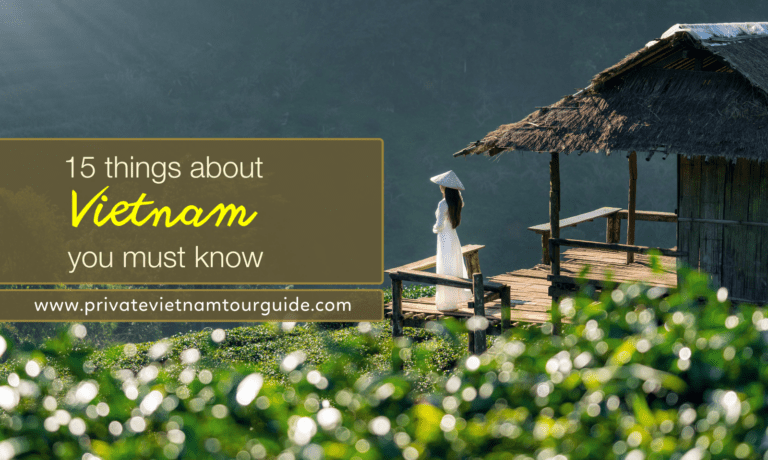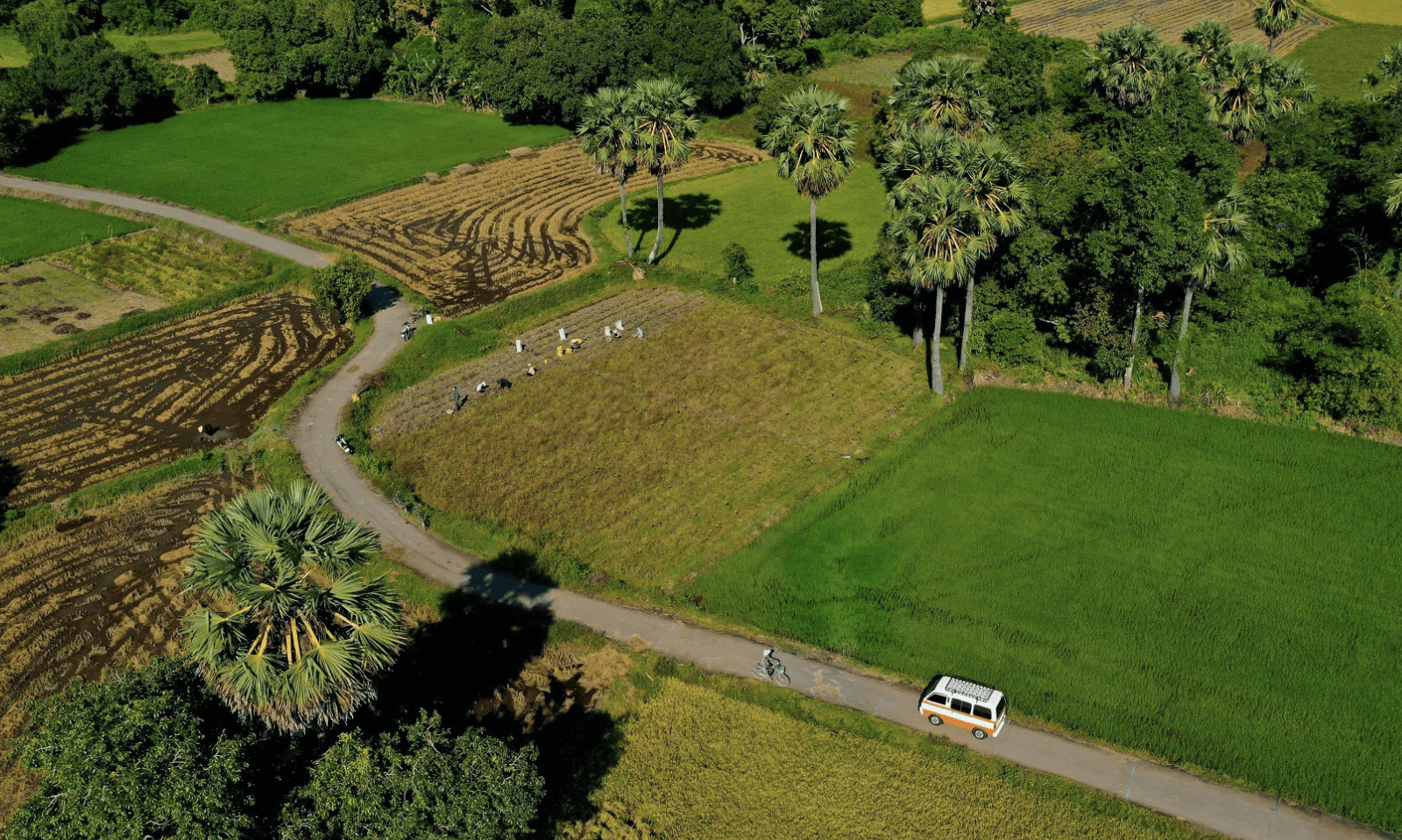Along the S-shaped country, every corner has its own unique beauty, from the water rice terraces in Muong Hum, Lao Cai to “năn bộp” fields in Ca Mau. Vietnamese Countryside will blow up your mind!
The Northern
These water rice terraces are the one that made Muong Hum, Lao Cai to be a notable place for its outstanding scenery. When the first rainy season comes, it means that the time for starting new crops is coming. The ideal time for seeing small ethnic residents work on the field is from May to June. While other tribes are cultivating rice, they are damming up and guiding buffaloes. On the rice terraces, this describes a busy scene.
Many magnificent rural villages are portrayed under the lens of Vietnamese photographers. Their contribution to promoting Vietnamese tourism and enticing Vietnamese people to come to the interior is the creation of diverse picture albums on urban places, rural areas, and nature.

The photo describes the early sunshine “country market” in the heart of Vi Thanh city, Hau Giang. People sit and sell in a fixed location with an area of 2-4 m2. They sit in the middle, around the layout of the items to be sold, the seller’s position continues on the ground in a long line, leaving only a small aisle for the buyer. The market meets from 2 a.m. to noon.

Children dance to a pond in the middle of a sultry summer afternoon in Bac Son, Lang Son, one of the stops on the photographer’s journey. In the photographer’s view, going to shoot first is to experience, admire the beautiful scenery as well as explore the regional culture, then want to share so that people enjoy the beauty of the homeland and the country.

Flowers are being cared after by a woman. The image was captured at Tay Tuu hamlet, which is located around 20 kilometres to the west of Hanoi’s downtown. This community received honors and recognition as a traditional artisan village in Hanoi in 2017. One of the major flower suppliers for the city and its environs, the flower village has an area of more than 200 hectares. The majority of the time during the Lunar New Year, locals produce popular flower kinds including roses, daisies, lilies, dahlias, or Transvaal daisies.
The Central

The rhythms of daily life in Thua Thien Hue, the Quang Dien district, and the Quang Loi Lagoon amid the vibrant morning landscape. About 30 kilometers from Hue City, this lagoon is a part of the Tam Giang lagoon system. The fishermen in this area depend on water currents to make a living and spend practically their entire lives on boats, which they regard as their home.

The lush green glass paddy was taken in a rural area in Quang Nam.

Ride on My Khe beach in Co Luong village, Tinh Khe commune, Son Tinh district, about 12 km east of the center of Quang Ngai city. This place is unspoiled with blue forests, clear sea, golden sunshine and fine sand stretching for 7 km. My Khe Sea is not far from Sa Ky port and only 3 km from Son My ruins.

Hundreds of ducks surround the farmer while preparing to feed them at Tra O lagoon, Phu My, Binh Dinh.
The Southern

After gathering water lilies in flooded fields in Kien Tuong, Long An, a lady is washing them to remove muck. From July through December, Southwest Vietnam experiences floods, which gives lotuses and water lilies life.

Herding sheep on a green grassland in Tuy Phong, Binh Thuan.
The author said that technology for photography is increasingly developing and drones are popular devices, helping photographers to exploit the overview of a specific area and scene that the camera cannot capture.

Mang Nhut brick village, Vinh Long looks like miniature towers in the sun. From Vinh Long city center, visitors run in the direction of Dinh Khao ferry, then turn to provincial road 902 to reach Mang Nhut. The brick village with an age of over 100 years is the largest producer of red bricks and ceramics in the Mekong Delta. This place has about 1,300 brick kilns, spread over an area of 3,000 hectares, of which the most concentrated are on the edge of Anh Cai creek to the section bordering Co Fry River – a tributary of the Mekong River.

In Ca Mau’s rural area, a local is gathering “năn bộp” (Eleocharis dulcis). When it rains, this kind of grass does nicely. The soft section of the grass is eaten raw with dipping sauces, heated in a saucepan, or stir-fried with tiny shrimp. In numerous Southwest provinces, including An Giang, Dong Thap, Soc Trang, Bac Lieu, and Ca Mau, “nan bp” trees are now abundantly cultivated.
Visitors to the Southwest area will have the opportunity to participate in local activities such as fishing, gathering water lilies, “điên điển flowers, or “năn bộp.” Vietnamese people like engaging in such straightforward activities because they let them feel closer to their beloved country, especially after an extended absence.
Check more information about Vietnam and Vietnamese Countryside at the blog!


